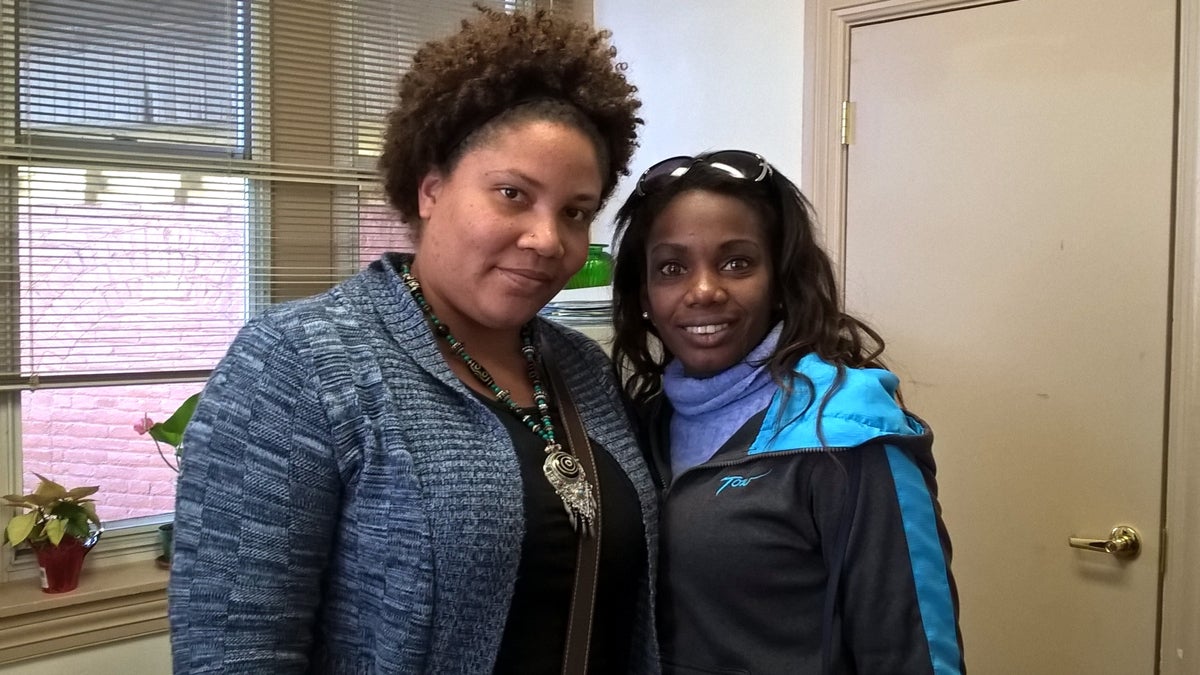Worried time is running out, more Cubans flee to U.S., Southeast Pa.

Claudia Rojas Dominguez (left) and Danisleydi Martinez Parejo (right) both came to the U.S. from Cuba in the last year and have settled in Lancaster
Cuba is only 90 miles off the coast of the United States, but Danisleydi Martinez Parejo’s journey was a long one.
In October, she flew to Ecuador alone, traveled across Colombia, took a boat to Panama and was robbed in Costa Rica, before finally crossing the Mexico-Texas border in early February.
Parejo is part of a mass migration of Cubans arriving in the United States, according to a report by the Pew Research Center.
Migration increased as relationships between the old enemies thawed, Pew reported, when President Barack Obama officially re-established diplomatic ties in July with the Communist country.
In the wake of that decision, national politicians have criticized the Cuban Adjustment Act, a policy in place since 1966 that offers wide protections to Cubans who make it to American soil.
In October, U.S. Rep. Paul Gosar of Arizona drafted a bill to repeal the act. Even some Cuban-American legislators, including Ileana Ros-Lehtinen and Marco Rubio, have criticized the policy or advocated changing the benefits it provides.
As written, the Cuban Adjustment Act allows Cubans to access federal benefits and also own property in Cuba, something that critics say has led to fraud and stories of Cubans living in Cuba while receiving benefits from Uncle Sam.
Against this backdrop, multitudes of Cubans have been coming to the United States — 43,159 Cubans arrived in the U.S. during fiscal year 2015, according to the Pew report, up from 24,278 the previous year.
Parejo, who is a teacher by training, said her reasons for leaving were primarily economic but that people in Cuba are motivated by fear their protections in the United States may end.
“The fear of losing this opportunity is the reason behind this massive immigration,” she said.
Locally, Lancaster-based Church World Services resettles Cubans who arrive in the United States; it’s also seen an uptick in arrivals.
The organization has worked specifically with Cuban and Haitian immigrants since 1995, but there was a sharp increase starting in 2012, according to resettlement program coordinator Valentina Ross.
The organization went from helping a few dozen arrivals a year to 224 in 2015, she said, although rise likely has more to do with expanded capacity in the organization than an onslaught of arrivals.
While much focus has been trained on the high level relationship between former Cold War enemies, life on the ground for many there has not changed radically, said Ross.
When Cubans arrive in this country, “they are afraid what they say can still cause harm to the family that is left there,” she said. Many give economic reasons for leaving, but “the political component of their escape is still there.”
The journey is also one that increasingly looks like the one Danisleydi Martinez Parejo took, crossing many borders at great personal expense. Thanks to a wrinkle called the “wet-foot, dry-foot” policy, Cubans who arrive by boat and are intercepted at sea may be sent back, while those who make it to U.S. soil can stay.
After processing by a Church World Service office in Miami, Parejo was sent to Lancaster. She said she is impressed by the “development” and “technology” in the United States and would like to find work in the medical field.
Her entire family, however, is still in Cuba. “If I had the chance to claim them and bring them all here, I think I wouldn’t have anything else to do in Cuba,” she said. “If I can’t bring them over, then I will have to go back.”
WHYY is your source for fact-based, in-depth journalism and information. As a nonprofit organization, we rely on financial support from readers like you. Please give today.

